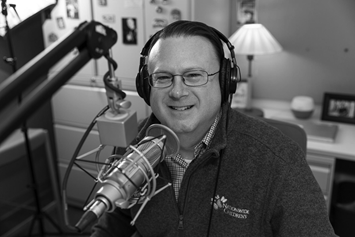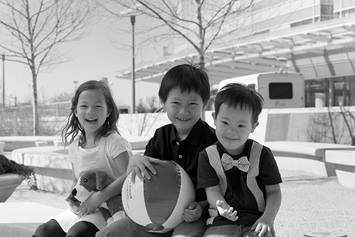Alopecia Areata
Alopecia areata is a form of hair loss that occurs in children and adults.
Alopecia areata (a-luh-pee-shuh eh-ree-ay-tuh) is an autoimmune disorder. This means that the body mistakenly attacks its own hair follicles as if they were a germ, and the hair falls out. Hair follicles are where hair grows below the skin.
The abnormal loss of hair often starts suddenly and falls out in patches, leaving a round bald spot on the scalp. Several spots can merge to form an irregular pattern or appearance. It can also affect the eyebrows, eyelashes, arms, legs, and nails. Alopecia areata:
- May be passed down in families.
- Can happen to anyone and at any age.
- Can’t spread from one person to another. It is not contagious.
- Isn’t dangerous.
- Can be emotionally hard for children and their families to cope with.
- May take many months for the hair to grow back.
Signs and Symptoms
- Hair usually falls out quickly.
- Can be one or more bald spots that start small and get larger.
- Can lose a small or large amount of hair or all the hair.
- Skin at the bald spot is completely bare and smooth.
- Nails can have white, bumpy spots or tiny dents (pitting). Nails split easily.
Diagnosis
A doctor or health care provider who specializes in skin, hair, and nails (dermatologist) can diagnose alopecia areata by:
- Doing a physical exam and taking a health and family history. They may ask when your child’s hair loss started and what pattern you’ve seen.
- Taking a small piece of skin (skin biopsy) from the scalp to test. This is often not needed.
Treatment
There is no cure for alopecia areata. Some children will lose and regrow their hair many times, with or without treatment. Regrowth can be slow.
If your child loses a lot of hair or it upsets them, these medicines may help:
- Steroids
- Topical (on the skin) creams, foams, liquids, and lotions
- Shots (injections) where the hair loss is. Repeat injections are often needed every few weeks. Shots aren’t used to treat young children who cannot sit still safely.
- Oral (by mouth) medicines
- There are new oral medicines to treat alopecia areata. These must be prescribed by a specialist and require frequent office visits and lab monitoring.
Other Things to Know
- Alopecia areata does not cause scarring.
- Other health problems may appear at the same time as alopecia areata. Your doctor may order blood tests to check for these.
- Your child should use sunscreen on the bald spots and their body when outdoors.
- If your child is embarrassed or worried about their hair loss, they may want to cover the bald spots. Schools often let children with hair loss wear hats or scarves while inside.
- Some families may want to buy a hair piece (wig or hair weave). Ask your doctor or health care provider where you can get this.
- Encourage your child to talk about their feelings. If they’re teased or bullied, let their school know. That way, the school can work with you on ways to help them.
- Children may feel better about themselves after talking to a professional counselor or joining a support group.
- The National Alopecia Areata Foundation’s (NAAF) website (www.alopeciaareata.org) has a newsletter. They can help your family reach out to others who have alopecia areata.
Helping Hands™ Patient Education Materials
Helping Hands™ are easy-to-read guides about different illnesses, therapies, surgeries, and more. They’re created by the Patient Education team at Nationwide Children’s Hospital and are reviewed and approved by clinical staff, like nurses, doctors, pharmacists, and psychologists. Nationwide Children's Hospital is not responsible for misuse of information in patient education materials, including Helping Hands™.
HH-I-384 | ©2015, revised 2024, Nationwide Children’s Hospital



